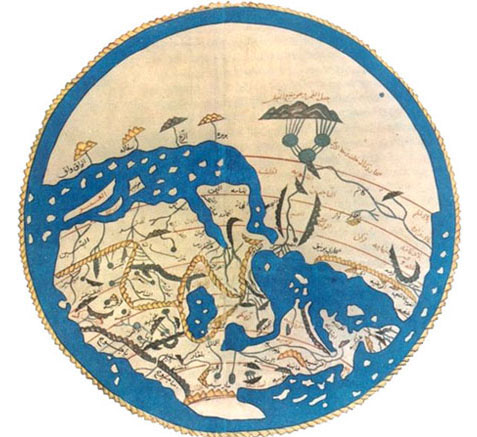Article of the Month - May 2021
“Identity, Mixed Unions and Endogamy of the Moriscos:
the Assimilation of the New Converts Revisited”
(Luis-Bernabé Pons: Arabic & Islamic Studies,
University of Alicante)
Luis F. Bernabé-Pons, "Identity, Mixed Unions and Endogamy of the Moriscos: the Assimilation of the New Converts Revisited," Mediterranean Historical Review 35 (2020): 79-99.
[The Mediterranean Historical Review has graciously granted open access to this article through December 2021.]
Article Abstract:
Recently, new testimonies and analyses have come to light calling into question historians’ long-held and nearly unanimous assumption that the Morisco community was decidedly endogamous. The aim of the present study is to examine different cases and texts indicating that mixed unions between Moriscos and Old Christians may have been more frequent, more desired (despite evident geographical and social differences), and more widespread than previously assumed. These unions created certain social groups in which traditionally accepted religious boundaries became blurred. On the other hand, the Christian authorities afforded this type of mixed unions an importance that far outweighs the scant attention paid to them in the literature. Such marriages were supported and promoted by the monarchy throughout the sixteenth century, and the expulsion orders from the early seventeenth century always provided for exceptions arising from mixed unions and their descendants. These data indicate a social reality which may have been more signibcant and incuential at the local and regional level than has previously been assumed.
Keywords: Spain, Moriscos, Mixed marriages, Identity, Society, Religion, Historiography, Endogamy, Assimilation, Islam, Christianity, Genealogy, Politics, Law, Expulsion
Nomination Statement:
Bernabé-Pons’ article convincingly argues that exogamy was common among Moriscos and supported by the Spanish state up until the expulsion of the Moriscos. In fact, he shows that even the expulsion decrees made a number of exceptions allowing members of mixed marriages or their descendants to remain in Spain. By revising the claim about the alleged endogamy of the Moriscos, the article points out how the practice of mixed marriages undermined clear ethno-religious classibcations (Moriscos, Old Christians) and opens a new avenue to research and frame the continued presence of Moriscos in Spain for decades after their expulsion.
Author’s Comment:
Some of the issues that I have studied in my analysis of post-Andalusian communities in the Iberian Peninsula have been the dynamic formation of social and cultural identities, the acculturation / assimilation dichotomy, and the integration strategies in a hostile society, both in Spain and in the Maghreb. Equally important has been for me the perception of concepts and categories entrenched in historiography and that should be highly debatable (taqiyya, social unanimity, etc.). In this sense, beyond the mere religious confrontation there is a whole social panorama in which I have been able to approach true Muslim Moriscos (Miguel de Luna), religiously indifferent Moriscos (Alonso López) or fervently Christian Moriscos (Ignacio de las Casas). Maybe the really significant point is that they were all Moriscos and were considered as such, although we are not completely sure what that category implies in each case. Several of those points that I have dealt with before appear in this paper about the mixed unions of the Moriscos. On the one hand, I am convinced that the extensive application of the concept of endogamy to Morisco communities has acted as a brake when it comes to 1) correctly evaluating the percentages of mixed marriages, 2) analyzing in depth the dynamics of social integration of the Moriscos, which were supported by the Crown, 3) gauging the identity transformation processes that occur diachronically in the different generations of Moriscos, and 4) explaining adequately the number of judicial cases presented to prevent expulsion, allegedly for being descendants of mixed marriages. In my opinion, only a vision which have to be global and flexible enough to go beyond religious commandments and social norms can explain the presence of a not negligible number of mixed unions and their descendants. Those descendants carry within them several identity labels and processes that often defy our established identification criteria.
Would you like to discuss this article?
Start a thread on the Mediterranean Seminar list-server
See the other Articles of the Month here.
